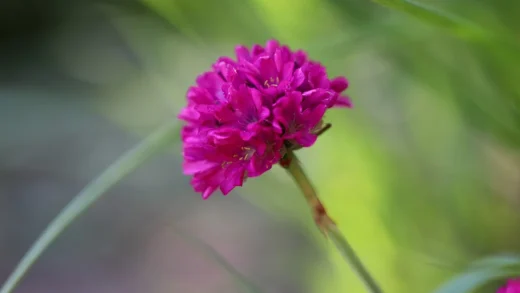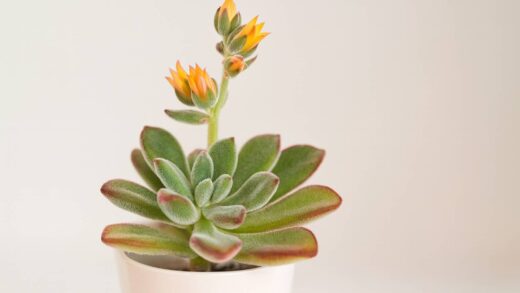Rosemary, an aromatic evergreen shrub native to the Mediterranean, is a prized addition to both culinary and ornamental gardens. Its successful cultivation hinges on replicating the conditions of its native habitat, which is characterized by abundant sunshine, excellent drainage, and relatively dry air. Understanding these core requirements is the first step toward growing a healthy, vigorous, and fragrant plant that will thrive for years. This involves a holistic approach, considering not just the basic elements of light and water, but also soil composition, air circulation, and appropriate pruning, all of which work in concert to support the plant’s well-being. Proper care ensures not only a beautiful plant but also a plentiful supply of aromatic leaves for culinary use.
The importance of location
Choosing the correct location for a rosemary plant is arguably the most critical factor for its long-term health. This plant has an insatiable appetite for sunlight, requiring a minimum of six to eight hours of direct, unfiltered sun each day. A south-facing position is often ideal, as it provides the most intense and prolonged light exposure, which is essential for developing the rich essential oils that give rosemary its characteristic aroma and flavor. Without adequate sunlight, the plant will become weak and “leggy,” stretching its stems in a desperate search for light, resulting in sparse foliage and a diminished aromatic quality.
Beyond sunlight, the chosen site must offer protection from harsh environmental conditions, particularly strong, cold winds. While rosemary is a resilient plant, persistent wind can dehydrate the foliage and cause stress, especially during the winter months when the plant is more vulnerable. Planting it near a protective wall or fence, or as part of a mixed border with other robust plants, can create a microclimate that shields it from the worst of the elements. This strategic placement helps the plant conserve energy and moisture, contributing to more robust growth and overall vitality.
For those cultivating rosemary in containers, the principle of location remains equally important, but offers greater flexibility. A potted rosemary can be moved throughout the day or season to capitalize on the best available sunlight. This is particularly advantageous in regions with less predictable weather patterns or during the transition from autumn to winter. The ability to relocate the plant allows for optimal light exposure and provides an easy solution for bringing it indoors to protect it from frost, a crucial consideration in colder climates where it would not survive the winter outdoors.
Finally, consideration must be given to the soil conditions of the chosen location. Rosemary is native to rocky, coastal areas and has adapted to thrive in soil that is not overly rich in organic matter. More importantly, the soil must be exceptionally well-draining to prevent water from stagnating around the roots, a condition that quickly leads to fatal root rot. Before planting, it is wise to assess the drainage of the intended spot and amend it if necessary to ensure that excess water can freely move away from the plant’s root zone, thus mimicking its preferred natural environment.
More articles on this topic
Soil and drainage essentials
The composition of the growing medium is a foundational element of successful rosemary cultivation. This plant detests “wet feet” and is highly susceptible to root rot, making excellent drainage the top priority for both in-ground and container plantings. The ideal soil is a sandy or loamy mixture that allows water to percolate through quickly, preventing the root zone from becoming saturated. For garden beds, this can be achieved by amending heavy clay soils with generous amounts of coarse sand, perlite, or fine gravel to improve its structure and porosity.
When preparing a planting hole or a container mix, the goal is to create a lean and gritty substrate. A successful recipe often involves a blend of standard potting soil, coarse sand, and a material like perlite or small gravel in roughly equal parts. This mixture ensures that the roots have access to the oxygen they need and that water does not linger. It is also beneficial to avoid overly rich composts or manures, as rosemary prefers a less fertile environment; excessive nutrients can lead to rapid, weak growth that is more susceptible to pests and diseases.
The pH of the soil is another important consideration, although rosemary is relatively adaptable in this regard. It generally prefers a neutral to slightly alkaline soil, with a pH range between 6.0 and 7.5. Most standard garden soils fall within this range, but it can be beneficial to conduct a simple soil test, especially if other plants in the area have shown signs of nutrient deficiencies related to pH imbalances. If the soil is overly acidic, a light application of garden lime can help raise the pH to a more suitable level for the plant.
For container-grown rosemary, the choice of pot is as important as the soil mix itself. A terracotta or other unglazed clay pot is highly recommended over plastic alternatives. The porous nature of clay allows moisture and air to pass through the sides of the pot, which helps the soil to dry out more evenly and quickly between waterings. Furthermore, ensuring the pot has at least one large drainage hole at the bottom is non-negotiable; without it, even the best-draining soil will become waterlogged, leading to the swift demise of the plant.
More articles on this topic
Watering practices
Proper watering is a delicate balance when it comes to rosemary, as it is far more tolerant of dry conditions than it is of excessive moisture. The most common mistake in rosemary care is overwatering, which creates the anaerobic soil conditions that lead to root rot. The key principle is to allow the soil to dry out thoroughly between waterings. A reliable method to check for moisture is to insert a finger two to three inches deep into the soil; if it feels dry at that depth, it is time to water.
When it is time to water, the plant should be irrigated deeply and thoroughly, ensuring that the entire root ball becomes saturated. This encourages the roots to grow deeper into the soil in search of moisture, which creates a more resilient and drought-tolerant plant. A slow, deep watering is more effective than frequent, shallow applications, which only wet the top layer of soil and can lead to weak, shallow root systems. For potted plants, water should be applied until it is seen freely exiting the drainage holes at the bottom of the container.
The frequency of watering will vary significantly depending on several factors, including the climate, season, soil type, and whether the plant is in a container or in the ground. During hot, dry summer months, a containerized rosemary might need watering every few days, while an established plant in a garden bed may only require irrigation every week or two, or even less if there is rainfall. During the cooler, dormant winter period, the plant’s water needs decrease dramatically, and watering should be reduced accordingly to prevent the soil from remaining cold and damp.
It is also beneficial to water the soil directly at the base of the plant rather than watering from overhead. Wetting the dense foliage can trap moisture and reduce air circulation, creating an ideal environment for fungal diseases like powdery mildew to develop. By applying water directly to the root zone, the leaves remain dry, and the water is delivered precisely where it is needed most. This simple adjustment in technique can significantly reduce the risk of common diseases and contribute to the overall health of the plant.
Pruning for health and shape
Pruning is a vital aspect of rosemary care, serving several important functions including promoting bushier growth, maintaining a desirable shape, and ensuring good air circulation through the plant. Regular harvesting of the tips for culinary use is a form of light pruning that encourages the plant to branch out, creating a fuller and more compact shrub. Without this regular trimming, rosemary can become woody and sparse, with long, leggy stems that have foliage only at the ends. This not only affects the plant’s appearance but also its productivity.
The best time to perform more substantial pruning is in the spring, after the plant has finished flowering. This allows the plant plenty of time to recover and put on new growth during the active summer season. It is generally advised to avoid heavy pruning in the late autumn or winter, as this can stimulate new, tender growth that is highly susceptible to damage from frost. When pruning, it is important to never cut back into the old, bare wood, as rosemary typically does not regenerate new growth from these areas. The cuts should always be made just above a set of healthy leaves.
A good rule of thumb for maintenance pruning is to never remove more than one-third of the plant’s total mass at any single time. This ensures that the plant retains enough foliage to continue photosynthesizing effectively and recover from the stress of being cut back. For overgrown or misshapen plants, a gradual renovation over two or three seasons is a much safer approach than a single, drastic cutback. This involves selectively removing the oldest, woodiest stems to encourage new growth from the base while maintaining the plant’s overall structure.
Beyond shaping the plant, pruning is also crucial for its health. Removing any dead, damaged, or diseased branches as soon as they are noticed helps to prevent the spread of potential problems. Thinning out the center of the plant can also significantly improve air circulation through the dense foliage. This increased airflow helps the leaves to dry more quickly after rain or watering, which is one of the most effective strategies for preventing the development of fungal diseases such as powdery mildew, which thrives in stagnant, humid conditions.
Seasonal considerations
Caring for rosemary requires an adaptive approach that changes with the seasons. During the spring and summer, which is the active growing season, the plant will require more consistent attention. This is the time for regular watering, ensuring the soil does not remain dry for extended periods, especially during heatwaves. It is also the primary season for pruning and shaping the plant, as it will recover quickly and respond with vigorous new growth. Fertilizing, if deemed necessary, should also be done sparingly during this period of active growth.
As autumn approaches, the focus of care shifts towards preparing the plant for the colder months ahead. Watering frequency should be gradually reduced as temperatures drop and rainfall potentially increases. This helps the plant to begin hardening off and entering a state of semi-dormancy, which is crucial for its winter survival. It is particularly important to cease any significant pruning in the autumn, as new growth stimulated at this time will be too tender to withstand the first frosts and can cause damage to the entire plant.
Winter care for rosemary is highly dependent on the climate and whether the plant is grown in the ground or in a container. In regions with mild winters, an established in-ground plant may require little more than a layer of mulch around its base to protect the roots from freezing temperatures. In colder climates, however, rosemary will not survive the winter outdoors. Container-grown plants should be moved indoors or to a protected location like a greenhouse or a cold frame before the first hard frost is expected.
When rosemary is brought indoors for the winter, its care routine must be adjusted to the different conditions. Indoor environments typically have lower light levels and drier air than the outdoors. The plant should be placed in the sunniest window available, often a south-facing one, and watering should be reduced significantly, allowing the soil to become quite dry between applications. It is also important to ensure good air circulation around the indoor plant to minimize the risk of pests and diseases that can thrive in stagnant indoor air.


















